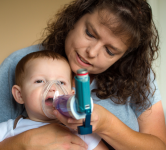References for Type 2 Diabetes Mellitus
References to accompany the May 2018 issue of Kai Tiaki Nursing New Zealand
- New Zealand Ministry of Health (2016). Annual update of key results 2015/16: New Zealand health Survey. https://minhealthnz.shinyapps.io/nz-health-survey-2015-16-annual-update/
- New Zealand Ministry of Health. (2017). Virtual Diabetes Register. http://www.health.govt.nz/our-work/diseases-and-conditions/diabetes/about-diabetes/virtual-diabetes-register-vdr
- WHO: World Health Organisation. (2016). Global Report on Diabetes. WHO: Geneva. http://apps.who.int/iris/bitstream/10665/204871/1/9789241565257_eng.pdf
- Muller, T. et al. (2017). The new biology and pharmacology of glucagon. Physiology Reviews. 97: 721-766.
- Rang, H., et al. (2016). Rang and Dale's Pharmacology (8th edition). London: Churchill Livingstone.
- Chatterjee, S., Khunti, K. & Davies, M. (2017). Type 2 diabetes. The Lancet. 389: 2239-2251.
- Olatunbosun, S. (2017). Insulin resistance. Medscape Reference. https://emedicine.medscape.com/article/122501-overview
- Cerf, M. (2013). Beta cell dysfunction and insulin resistance. Frontiers in Endocrinology. 4(37): 1-12.
- Bray, G., Kim, K. & Wilding, J. (2017). Obesity: a chronic relapsing progressive disease process. A position statement of the World Obesity Federation. Obesity Reviews. 18(7): 715-723.
- Thompson, P. (2016). Editorial commentary: the metabolic syndrome: what does the clinician need to know and do? Trends in Cardiovascular Medicine. 26(4): 374-375.
- Achival, D. (2017). Hyperosmolar hyperglycemic state. Medscape Reference. https://emedicine.medscape.com/article/1914705-overview
- Lupsa, B. & Inzucchi, S. (2014). Diabetic ketoacidosis and hyperosmolar hyperglycemic syndrome. In Loriaux, L (ed.). Endocrine emergencies: recognition and treatment. New York: Springer Science.
- American Diabetes Association. (2017). Standards of medical care in diabetes-2017. Diabetes Care.40(suppl. 1). S1-S135.
- Quan, D. (2017). Diabetic neuropathy. Medscape Reference. https://emedicine.medscape.com/article/1170337-overview#a2
- Thomas, M., Cooper, M. & Zimmet, P. (2016). Changing epidemiology of type 2 diabetes mellitus and associated chronic kidney disease. Nature Reviews Nephrology. 12: 73-81.
- Hill, K. et al. (2017). Social disparities in the prevalence of diabetes in Australia and in the development of end stage renal disease due to diabetes for Aboriginal and Torres Strait Islanders in Australia and Maori and Pacific Islanders in New Zealand. BMC Public Health. 17:802.
- Batuman, V. (2017). Diabetic nephropathy. Medscape Reference. https://emedicine.medscape.com/article/238946-overview#a1
- Garber, A. et al. (2017). Consensus statement by the American Association of Clinical Endocrinologists and American College of Endocrinology on the comprehensive type 2 diabetes management algorithm- 2017 executive summary. Endocrine Practice. 23(2): 207-238.
- Wykoff, C. (2016). Proliferative diabetic retinopathy: should new data change management? Medscape Medical News. https://www.medscape.com/viewarticle/856665
- Lechner, J., O’Leary, O. & Stitt, A. (2017). The pathology associated with diabetic retinopathy. Vision Research. 139: 7-14.
- Australian Department of Health. (2015). Australian National Diabetes Strategy 2016-2020. Canberra: Commonwealth of Australia.
- NICE: National Institute for Health and Clinical Excellence. (2015). Type 2 diabetes in adults: management. www.nice.org.uk/guidance/ng28
- Chan, D. & Watts, G. (2011). Dyslipidaemia in the metabolic syndrome and type 2 diabetes: pathogenesis, priorities and pharmacotherapies. Expert Opinions in Pharmacotherapeutics. 12(1) 13-30.
- Kahn, s. et al. (2014) Pathophysiology and treatment of type 2 diabetes: perspectives on the past, present and future. Lancet. 383(9922): 1068-1083.
- Abdul-Ghani, M. & DeFronzo, R. (2017). Is it time to change the type 2 diabetes treatment paradigm? Yes! GLP-1 RAs should replace metformin in the type 2 diabetes algorithm. Diabetes Care. 40: 1121-1127.
- Bailey, C. Tahrani, A. & Barnett, A. (2016). Future glucose-lowering drugs for type 2 diabetes. Lancet Diabetes and Endocrinology. 4: 350-359.





